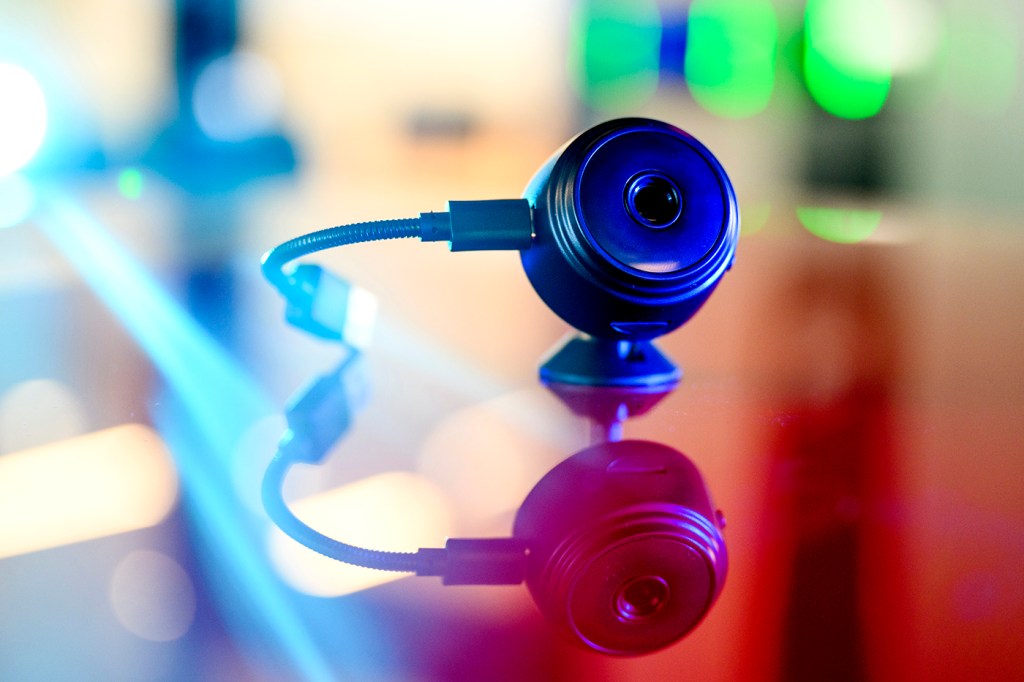Capturing real-time video through walls isn't difficult if you have an antenna and some engineering know-how. It could be a huge threat to billions of security cameras and phones.


When it comes to protecting a bank or even your home, security cameras are one of the first lines of defense. But what if these cameras aren't as secure as we think?
New research from Northeastern University confirms that there may be a huge gap in our security infrastructure –– and it's coming from the very devices designed to protect it.
Kevin Fuprofessor of electrical and computer engineering at Northeastern who specializes in cyber security, has found a way to eavesdrop on most modern cameras, from home security cameras and dash cams to your phone camera. It's called EM Eye, short for Electromagnetic Eye, the technique can record video from another person's camera through walls in real time. It redefines the idea of a Peeping Tom.


According to Fu, anyone with a few hundred dollars worth of equipment, a radio antenna and some engineering know-how could do this. The problem, Fu says, is not the lens but the cables inside most modern cameras.
“With the typical security camera, there's a camera lens inside, and then there has to be something else inside, like a computer chip, that has a wireless connection back to the internet,” Fu says. “There are wires between two different chips inside [these cameras,] and these cables emit electromagnetic radiation. We take that radio and then we decode it and we happen to get the encoded video in real time.”
The data transmission cable that sends a video as bits and bytes inadvertently ends up acting as a radio antenna that leaks all kinds of electromagnetic information, including those bits and bytes. If someone had the desire and the technical knowledge, they could take this electromagnetic signal and play the video in real time, without sound.
The technique exposes a gap in how manufacturers approach camera design and production.
“The state of modern smartphone cameras is [manufacturers] try very hard to protect the intentional digital interfaces, the actual upload channel to the cloud,” says Fu. “They don't seem to be putting much effort into leaking information through unintended channels. They never intended this cable to be a radio transmitter, but it is.”
The version of the video that Fu and his team receive is initially distorted –– almost X-ray-like–– due to pixel loss during the transmission process. However, using machine learning, Fu and his team were able to clean up the video to look much closer to the original.
Fu and his team have tested EM Eye on 12 different kinds of cameras, including smartphone cameras, dash cams, and home security cameras. Results vary depending on how far away one would have to be to eavesdrop on these different devices. For some, a peeping tom should be less than 1 foot away. for others, they could be as much as 16 feet apart.
However, he says, if one had enough technical know-how, it would take very little to extend that range.
“A college sophomore or junior could probably do it, but they're getting electrical and computer engineering skills to increase that distance,” Fu says.
Most importantly, since EM Eye is eavesdropping on wires, not a computer recording video to a hard drive, your camera doesn't actually need to be recording to be eavesdropped.
“If you have your lens on, even if you think you have the camera off, we're collecting,” Fu says. “Basically, anywhere there's a camera, now there's a risk that that live, real-time feed could be picked up by someone as close as a meter through walls.”
For consumers, Fu says a plastic lens cover may not be guaranteed to protect you –– infrared signals can still get through –– but it's a good first step in combating this kind of cyberthreat.
“There's the classic: Be aware of your surroundings,” says Fu. “Maybe you don't want to put this on [camera] on your wall you share with your neighbor.”
As for camera manufacturers, Fu hopes these findings are a wake-up call.
It's nice that we have all this software and these … devices, but at the end of the day, these [emit] electrons and they can get out,” says Fu. “If you want to have a complete cybersecurity story, yes, do the good science, but you also have to do the computer engineering and the electrical engineering if you want to protect against these kinds of eavesdropping threats.”



